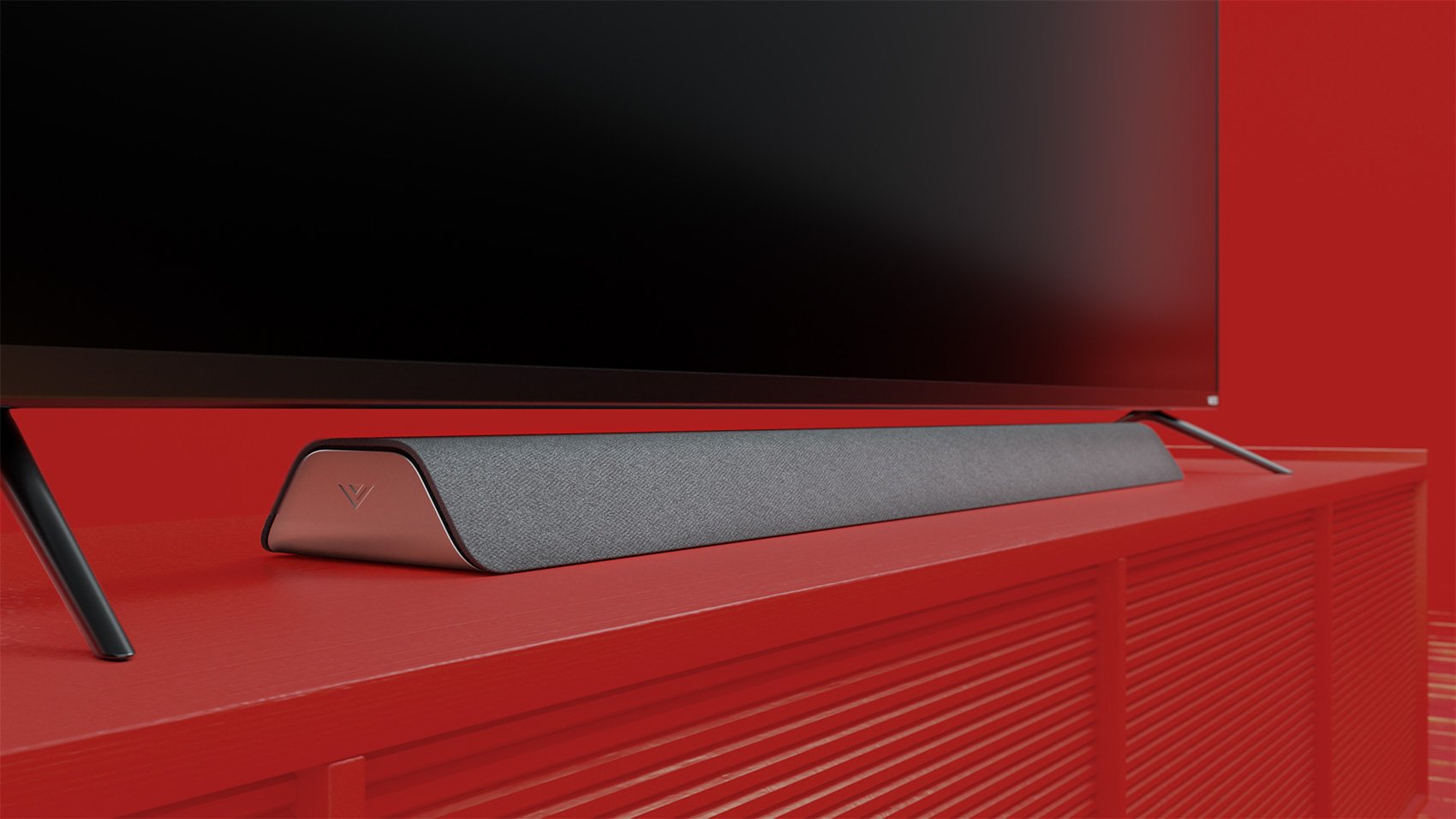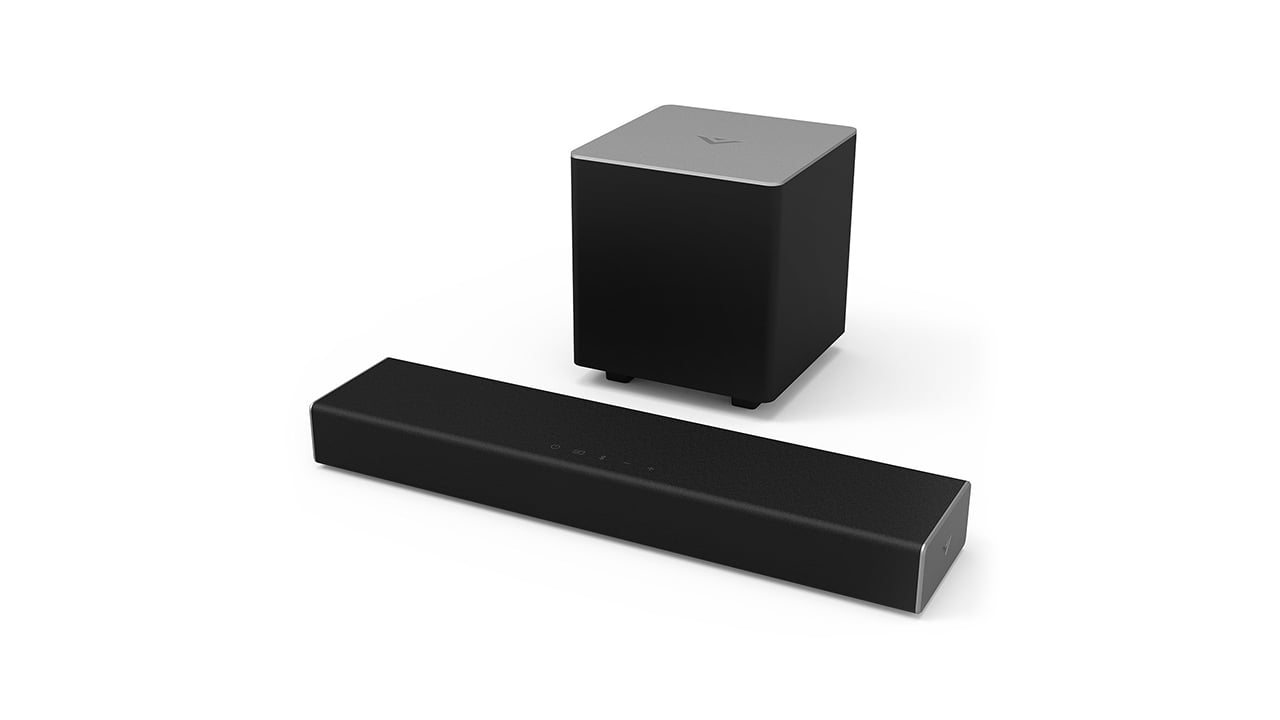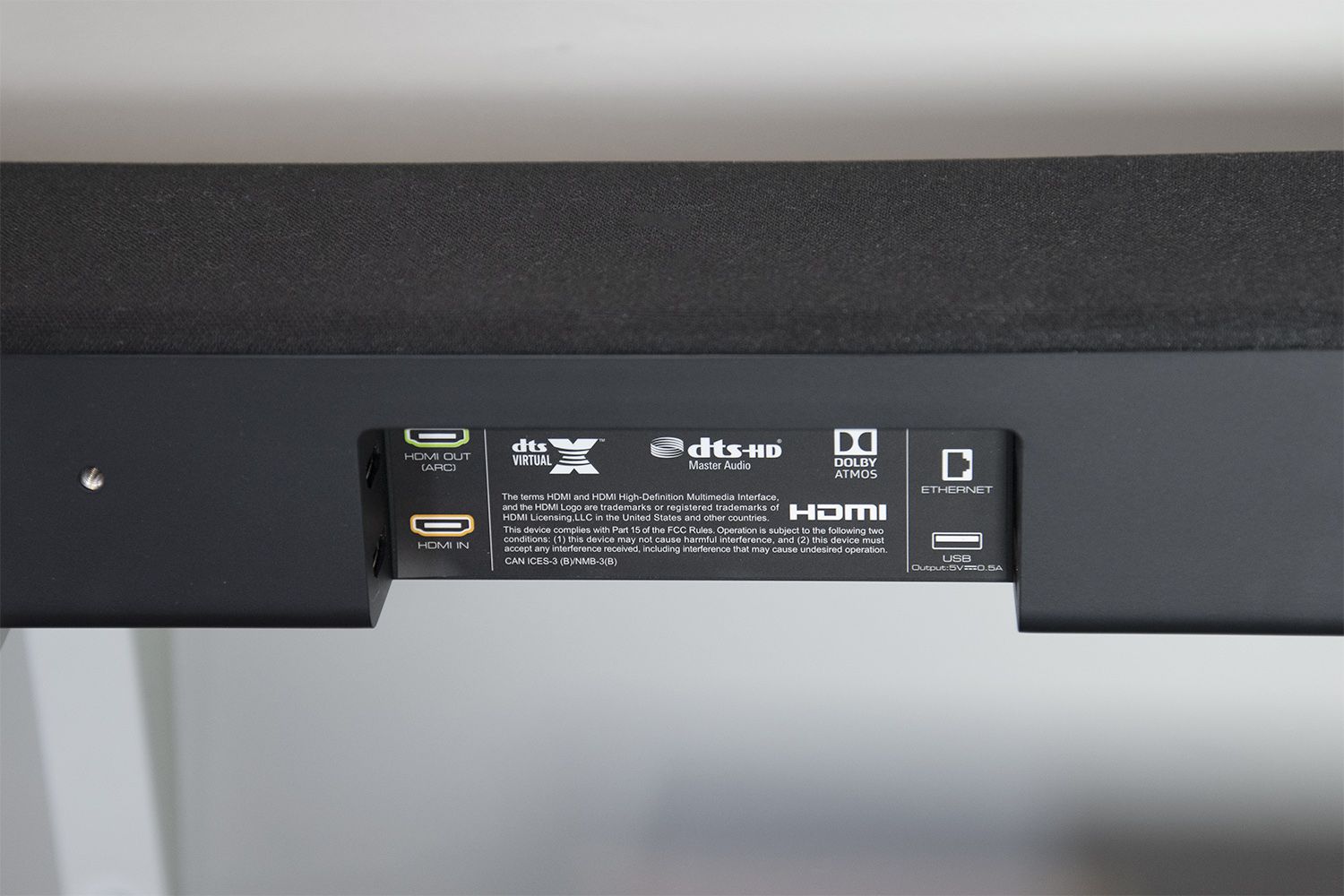Home>Production & Technology>Sound Bar>What Do The Lights On My Vizio Sound Bar Mean


Sound Bar
What Do The Lights On My Vizio Sound Bar Mean
Modified: January 22, 2024
Discover the meaning behind the lights on your Vizio Sound Bar and troubleshoot any issues. Get the answers you need for optimal Sound Bar performance.
(Many of the links in this article redirect to a specific reviewed product. Your purchase of these products through affiliate links helps to generate commission for AudioLover.com, at no extra cost. Learn more)
Table of Contents
Introduction
When it comes to enhancing your audio experience at home, a sound bar can be a game-changer. Whether you’re watching movies, listening to music, or playing games, a sound bar can deliver immersive sound that brings your entertainment to life. But what do the lights on your Vizio sound bar mean? Understanding the different indicator lights can help you troubleshoot issues, optimize settings, and make the most out of your sound bar.
Vizio sound bars are equipped with various indicator lights that provide information about power status, input sources, connectivity, volume levels, and more. These lights can vary depending on the model and features of your sound bar, so it’s important to refer to the user manual for specific details. In this article, we will explore common indicator lights found on Vizio sound bars, explain their meanings, and offer troubleshooting tips.
By understanding the lights on your Vizio sound bar, you can easily identify if there’s an issue with power, connectivity, or settings. This knowledge empowers you to take the necessary steps to resolve any problems and ensure optimal audio performance. So, let’s dive into the various indicator lights and what they signify on your Vizio sound bar.
Power Indicator Light
The power indicator light on your Vizio sound bar is one of the most important lights to pay attention to. It typically indicates whether the sound bar is powered on, in standby mode, or experiencing a power-related issue.
When the power indicator light is solid white, it means that the sound bar is powered on and ready to use. This is the normal operating state, and you should be able to hear sound when playing audio through the sound bar.
If you see a blinking power indicator light, it could signify that the sound bar is in standby mode. Standby mode is a power-saving state where the sound bar is not actively playing audio. In this mode, the sound bar is still on but consumes minimal power. To wake the sound bar from standby mode, simply press the Power or Volume buttons on the remote control or the sound bar itself.
However, if the power indicator light is completely off and the sound bar does not respond to any commands, it may indicate a power-related issue. Check the power cord connections and ensure that the sound bar is properly plugged into a working power outlet. If the issue persists, try using a different power outlet or consider contacting Vizio customer support for further assistance.
Additionally, some Vizio sound bars have a multi-color power indicator light that can display different colors to indicate different states. For example, a red power indicator light might indicate low battery on a sound bar with a built-in battery. It’s important to refer to the user manual specific to your sound bar model for accurate interpretation of the power indicator light colors.
By paying attention to the power indicator light, you can easily determine the operational status of your Vizio sound bar and troubleshoot any power-related issues that may arise.
Input Indicator Light
The input indicator light on your Vizio sound bar informs you about the currently selected input source. This light is particularly helpful when you have multiple devices connected to your sound bar and want to ensure that the correct input is being used.
When you power on your sound bar, the input indicator light may briefly cycle through different colors or flash to indicate that it is searching for an input source. Once it has detected an input signal, the light will stabilize on a specific color or pattern, depending on the input source.
For example, a blue input indicator light may indicate that the sound bar is receiving audio from a Bluetooth-enabled device. This is useful when you want to wirelessly stream music or other audio content from your smartphone or tablet to the sound bar.
If the input indicator light is green, it means that the sound bar is receiving audio from an optical or HDMI connection. This is commonly used when connecting the sound bar to a TV or other audio/video devices using an optical or HDMI cable.
Some Vizio sound bars may have additional input sources, such as auxiliary (AUX) or RCA connections. In such cases, the input indicator light may display a different color or pattern to indicate these sources.
If you’re experiencing issues with the audio input, make sure that the correct input source is selected on your sound bar. You can do this by pressing the Input or Source button on the remote control or the sound bar itself. The input indicator light should update accordingly.
If the input indicator light doesn’t match the expected input source, check the audio cables and connections. Ensure that the cables are securely plugged into both the sound bar and the connected devices. If you’re using HDMI, make sure that ARC (Audio Return Channel) is enabled on your TV and the sound bar.
By paying attention to the input indicator light and selecting the correct input source, you can ensure that the sound bar is receiving audio from the desired device, providing you with an optimal listening experience.
Bluetooth Indicator Light
The Bluetooth indicator light on your Vizio sound bar provides information about the status of the Bluetooth connection. This light is particularly important when you want to connect your sound bar to a Bluetooth-enabled device, such as a smartphone or tablet, for wireless audio playback.
When the Bluetooth indicator light is solid blue, it means that the sound bar is successfully connected to a Bluetooth device and ready to stream audio. This indicates that you can play music, podcasts, or any other audio content from your paired device through the sound bar.
If the Bluetooth indicator light is blinking or not lit at all, it means that the sound bar is not currently connected to a Bluetooth device or is not in Bluetooth pairing mode. To pair the sound bar with your Bluetooth device, ensure that Bluetooth is enabled on your device and put the sound bar into pairing mode. This can usually be done by pressing and holding the Bluetooth or Pairing button on the sound bar or its remote control.
Once the sound bar is in pairing mode, the Bluetooth indicator light will start blinking, indicating that it is ready to pair with a new device. At this point, you can go to the Bluetooth settings on your device and select the sound bar from the available devices list.
If you’re having trouble connecting your Bluetooth device to the sound bar, make sure that you are within the Bluetooth range (typically up to 30 feet) and that there are no obstacles interfering with the signal, such as walls or other electronic devices. It’s also a good idea to check if your device is already connected to another Bluetooth device and disconnect it before attempting to pair with the sound bar.
If you’ve successfully paired your Bluetooth device with the sound bar in the past but are now experiencing connection issues, try turning off Bluetooth on your device and then turning it back on again. This can help refresh the Bluetooth connection and resolve any temporary connectivity issues.
By paying attention to the Bluetooth indicator light, you can easily determine the status of the Bluetooth connection on your Vizio sound bar and troubleshoot any pairing or connection issues that may arise. This ensures a seamless and enjoyable wireless audio experience.
Volume Indicator Light
The volume indicator light on your Vizio sound bar provides visual feedback about the current volume level. It helps you gauge the audio output and adjust the volume to your desired level.
When you increase or decrease the volume on your sound bar, the volume indicator light will typically change accordingly to reflect the new volume setting. For example, the light may get brighter or dimmer, or it may move along a set of bars to indicate the volume level.
Some Vizio sound bars may have a color-coded volume indicator light, where the color changes based on the volume level. For instance, the light may turn green when the volume is low, yellow when it’s moderate, and red when it’s at its highest level. This color-coded system provides a visual reference for the volume and helps you quickly identify the current audio output level.
Additionally, the volume indicator light may blink or flash to indicate other status conditions. For example, it may blink rapidly to indicate that the sound bar has reached its maximum volume and cannot go any higher. It could also flash in sequence to indicate that the sound bar is in mute mode.
By paying attention to the volume indicator light, you can easily gauge the volume level of your Vizio sound bar and adjust it to your liking. Whether you prefer it soft and subtle for background music or loud and immersive for movie nights, the volume indicator light provides a visual guide to ensure you have the perfect audio experience.
EQ Mode Indicator Light
The EQ (Equalizer) mode indicator light on your Vizio sound bar indicates the currently selected sound mode or equalizer preset. EQ modes allow you to adjust the sound output to enhance specific types of content, such as movies, music, or dialogue.
When you switch between EQ modes on your sound bar, the EQ mode indicator light will typically change to reflect the selected mode. Different sound bars may have different EQ mode names or symbols, so it’s essential to refer to the user manual for accurate interpretation.
For example, your sound bar may have different EQ modes like “Movie,” “Music,” “Game,” or “Dialogue.” Each mode is designed to optimize the sound for the respective content type. When you select the “Movie” mode, the EQ mode indicator light may turn blue, indicating that the sound bar is optimized for a cinematic audio experience.
Some sound bars may also have custom EQ modes that allow you to fine-tune the sound according to your preferences. In this case, the EQ mode indicator light may display a different color or pattern to indicate the custom mode you’ve selected.
By understanding the EQ mode indicator light, you can easily identify the sound mode that is currently active on your Vizio sound bar. If you prefer a specific sound mode, you can switch to it using the remote control or the sound bar’s on-device controls to optimize the audio output for your desired content.
Experimenting with different EQ modes can enhance your audio experience and provide optimal sound quality for various types of content. Whether you want deep bass for action movies or crisp dialogue for TV shows, the EQ mode indicator light helps you determine which sound mode is active, allowing you to customize your audio settings accordingly.
Troubleshooting Guide
If you encounter any issues with your Vizio sound bar, here are some troubleshooting steps you can follow to resolve common problems:
- Check the power supply: Ensure that the sound bar is properly plugged into a working power outlet. Make sure the power cord is securely connected to both the sound bar and the power source. If the power indicator light is not lit or blinking, try using a different power outlet or power cord.
- Verify the connections: Check the audio cables and connections between the sound bar and the audio source, such as a TV or a mobile device. Ensure that the cables are securely plugged in and that the correct input source is selected on the sound bar.
- Reset the sound bar: If you’re experiencing multiple issues or the sound bar is not responding, try performing a factory reset. Refer to the user manual for instructions on how to reset your specific model of Vizio sound bar.
- Update firmware: Ensure that your sound bar’s firmware is up to date. Visit the Vizio website or refer to the user manual for instructions on how to update the firmware.
- Check Bluetooth connectivity: If you’re having trouble connecting a Bluetooth device to the sound bar, make sure that Bluetooth is enabled on both the sound bar and the device. Check if the sound bar is in pairing mode and within Bluetooth range of the device.
- Adjust audio settings: Explore the sound bar’s menu or settings to adjust audio features such as treble, bass, balance, or surround sound. Experimenting with these settings can often enhance the audio output to your preference.
- Contact customer support: If you have exhausted all troubleshooting options and the issue persists, consider reaching out to Vizio’s customer support for further assistance. They can provide specific guidance based on your sound bar model and help resolve any technical problems.
Remember, the troubleshooting steps may vary depending on your specific Vizio sound bar model and the nature of the problem. The user manual should provide detailed instructions and additional troubleshooting tips for your device.
By following these troubleshooting steps, you can quickly identify and resolve common issues with your Vizio sound bar, ensuring a seamless audio experience for all your entertainment needs.
Conclusion
Understanding the different indicator lights on your Vizio sound bar is essential for maximizing your audio experience. By knowing what each light signifies, you can troubleshoot issues, optimize settings, and ensure the best audio performance.
The power indicator light informs you of the sound bar’s power status and can indicate any power-related issues. The input indicator light helps you identify the currently selected input source, ensuring that you’re receiving audio from the desired device. The Bluetooth indicator light provides information about the status of the Bluetooth connection, allowing you to wirelessly stream audio from your paired devices. The volume indicator light visually indicates the volume level, enabling you to adjust the sound output to your preference. Lastly, the EQ mode indicator light displays the currently selected sound mode or equalizer preset, enhancing the audio performance for specific content types.
If you encounter any issues with your sound bar, refer to the troubleshooting guide for steps to resolve common problems. Checking the power supply, verifying connections, resetting the sound bar, updating firmware, adjusting audio settings, and contacting customer support are all helpful avenues to address any technical issues that may arise.
Remember to consult your Vizio sound bar’s user manual for model-specific details and instructions. By following these guidelines and understanding the indicator lights, you can optimize your Vizio sound bar to deliver immersive sound that enhances your entertainment experience.
So, immerse yourself in your favorite movies, music, and games – let your Vizio sound bar transform the way you hear audio, and let the indicator lights guide you through the realm of exceptional sound.











